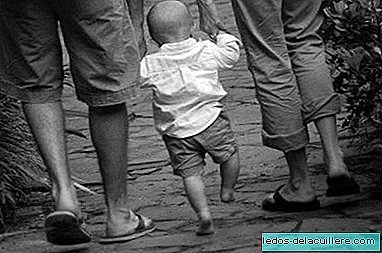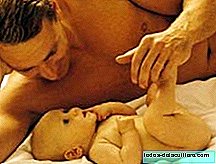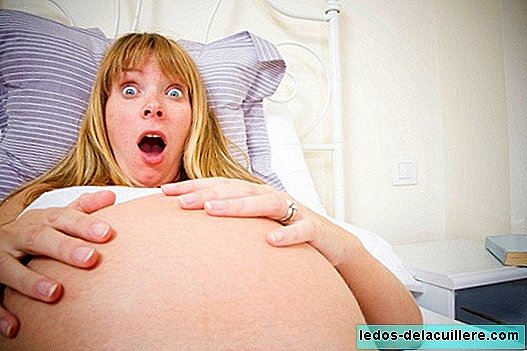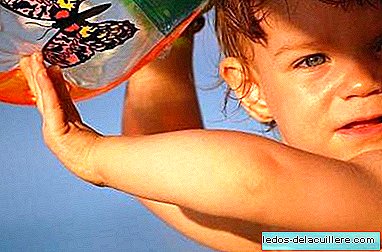
The growth and development of an individual is a continuous phenomenon that begins at the moment of conception and culminates at the end of puberty, period during which maturity is reached in its aspects: physical, psychosocial and reproductive. We have already seen how the baby grows in the womb, and today we focus on growth after the birth of the baby until puberty.
The hormones are performers of the genetic program and play a fundamental role in growth and physical development, especially through their action on bone and cartilaginous tissue. The role of different hormones on growth is different depending on whether it is prenatal or postnatal growth.
As we have seen, insulin, somatomedins, placental lactogen and numerous local growth factors predominantly influence prenatal growth.
Instead, postnatal growth is mainly regulated by growth hormone, somatomedins and thyroid hormones, also involving parathyroid hormone and vitamin D in skeletal development. Sex steroids are especially important in pubertal growth.
The speed of development and the maturational advancement of the child do not follow uniformly, but the three periods that we analyze below can be differentiated.
Early childhood stage
Understands the first two years of life (Although there are also authors who extend it to four years of the child), being rapid growth. The mechanism of paracrine-autocrine regulation of the fetal period is replaced by endocrine regulation, in which the pituitary growth hormone begins to play a prominent role after six months of the baby.
The growth pattern, which was conditioned by the maternal phenotype, is located in the corresponding channel conditioned by the genetic factor. There is an increase in body fat and a change in body proportions with progressive increase in the lower segment, due to the rapid growth of the limbs.
The first three years of life they are presented as a transition stage between the very rapid growth phase, typical of the infant, and the period of stable growth, which extends from three years to the beginning of puberty.
It is a maturation period in which the child makes important advances in the acquisition of psychomotor functions, while his digestive and metabolic functions are reaching a sufficient level of maturity to approximate his diet to that of the older child.
In this period of rapid growth, if we consider the first four years of life, it is characterized by a progressive decrease in speed from 25 centimeters the first year to 12 centimeters the second, 10 centimeters the third and 8 centimeters the fourth year.

Stable Growth Period
Understands from the three or four years of the child until the beginning of the pubertal stretch. It is a period of slow and uniform growth. Before the onset of puberty, a small deceleration of linear growth is observed.
In the preschool stage (from four to six years old), the growth rate is lower than in the first year of life. During the school period (from seven to eleven, also known as "childhood"), growth and weight gain are slow but uniform. It is a stage of preparation for the development and growth characteristic of adolescence (pubertal strain) that will ensue later.
During the preschool and school age there is a decrease in the speed of growth in relation to development during the first year of life and adolescence. Increase in weight and height:
From the age of four, the growth rate until the beginning of adolescence is about 2.5 to 3.5 kilos per year.
As for size, it increases at a rate of about five to eight centimeters per year until the onset of puberty.
But nevertheless, not all boys or girls grow at this rate, genetic conditions must be taken into account (ethnicity, family size of both mother and father), health status and of course, eating habits.
Childhood, which is the stage between birth and six or seven years, ends in this period. We then enter childhood (or school age), from six or seven years to 12, which is when the next stage of puberty begins.
Puberty and adolescence
The last important stage of growth is puberty. Puberty is characterized by important somatic and emotional changes that coincide with the process of sexual maturation. It is colored by a readjustment of the endocrine balance that ends with the appearance of menstrual cycles in the girl and spermatogenesis in the boy, and that implies:
- Acceleration of growth until reaching adult height.
- Appearance of secondary sexual characters.
- Growth and maturation of the gonads and genital apparatus.
- Psychosocial changes that lead to the acquisition of personality, psychological and emotional balance of the adult.
During pubertal development The maximum growth rate can reach up to 12 cm / year in men and 9 cm / year in women. The development, which concludes the stage of childhood, usually occurs on average at 12 years in girls and at 13 years in boys.
We have made a tour through the stages of baby growth until puberty, going through childhood and childhood and seeing its basic characteristics. After these stages, the organism obviously continues to evolve, but it is already outside our thematic scope.












